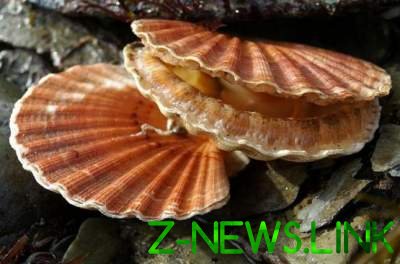 Eyes similar in structure to Hubble and other modern telescopes.
Eyes similar in structure to Hubble and other modern telescopes.
Ocean creatures are known for their amazing eyes, but scallops are one of the most amazing visual systems of all living beings on Earth.
Eyes similar in structure to Hubble and other modern telescopes.
Scallops have 200 eyes. Each eye has two the retina and 500,000 cells, which have two types of photoreceptors, the purpose of which remained a mystery to scientists. Each eye uses a mirror instead of lenses to focus the light.
In the 60-ies of the last century, biologists knew that the curved mirror eyes of scallops created by crystals of guanine, a highly reflective material. Although these crystals are usually formed in a bulky prisms, crystals in the eyes of the comb are the perfect squares that are like forklift mirror, creating a smooth surface that minimizes optical distortion.
Scientists froze the eye scallops in liquid nitrogen, and then cut them into layers and enlightened with a scanner electron microscope. It is possible to obtain a three-dimensional computer model of the eye and understand how light interacts with each component.
Scientists struck their experiment, because the principles of experimental eye combs reminded them not the visual organs of other animals, and the most modern optical telescopes. The main part of the telescope is not the lens it is missing, and two mirrors, which focus the light at one point.
Similar mirrors are present and in the eyes of scallops – one of them is located under their “rear” of the retina, and the second is under the second retina is located near the pupil, whose presence in these mollusc previously, scientists could not explain.
In the study, researchers found that when the light hits it, it takes place in the upper part of the second retina of a comb. But when light falls at an angle, it hits the bottom the retina, by enhancing the peripheral vision of a comb almost invisible medium.
According to scientists, sea scallops have a fairly “fast” eyes with wide view angle, nearly 250 degrees, without using a lens or other expensive structures to support work which requires a lot of energy.
Scientists have also hypothesized about how these creatures perceive the image of the 200 different eyes at the same time: the process in the “brain” of a comb combines them into a single, cohesive image.
© 2017 – 2019, paradox. All rights reserved.





